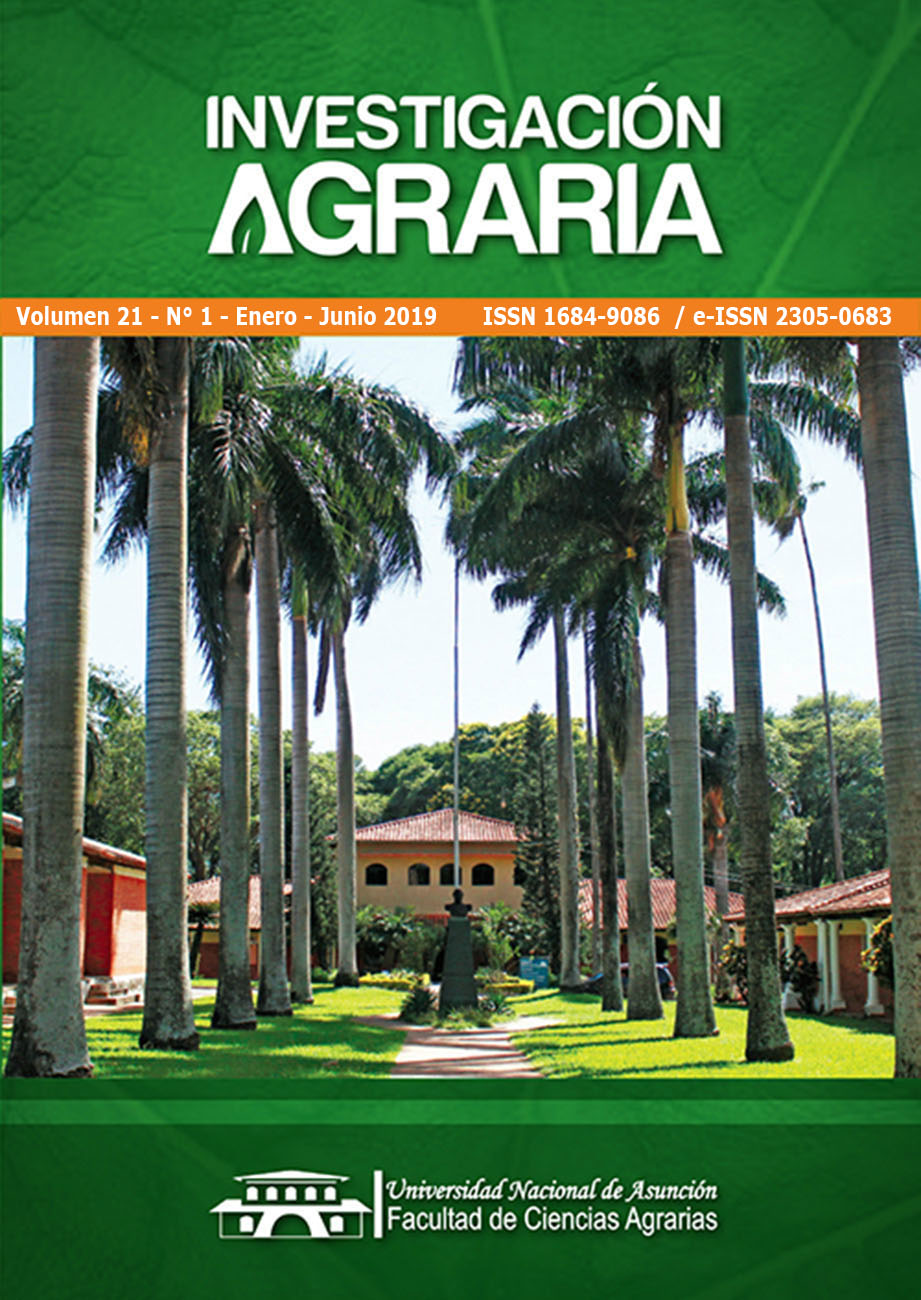Paraguay's export to MERCOSUR: Sub heading threatened by de UE-MERCOSUR trade agreement
DOI:
https://doi.org/10.18004/investig.agrar.2019.junio.43-53%20Keywords:
Regional Association Agreement, trade indicator, trade complementary indexAbstract
The impact of the EU-MERCOSUR Regional Association Agreement, which has been under negotiation since 2000, has been widely studied with an emphasis on Brazil and Argentina, before Paraguay and Uruguay. Models that provide aggregate results and not products as negotiated have been used. Taking these into consideration the research focused on Paraguay with the objective of identifying products exported by this country to MERCOSUR, which could be substituted by similar ones from the EU, once the Agreement is implemented. The identification was made at the level of sub headings of the Harmonized Commodity Description and Coding Systems (HS) usingtrade indicators.The data used was the trade average from 2010-2012, the most updated at the time the study started.Trade data were from the World Bank database known as WITS (World Integrated Trade Solutions), and MERCOSUR´s tariff data from the Common External Tariff website. The most threatened sub headings of being replaced or displaced from MERCOSUR had a low weight in Paraguayan exports. However, for several products, MERCOSUR was the only or the most important market. The disaggregation by categories facilitated identifying the threatened products and quantifying the importance of the regional market for them. Most products with substitution threats were manufactures. These results lead to the conclusion that the Agreement will negatively affect mainly the manufacturing industry in Paraguay.Downloads
Metrics
References
Asociación Latinoamericana de Integración. (2002). Probable impacto que tendrían los acuerdos con la Unión Europea en el comercio intrarregional y en el comercio de los países miembros con los países de Europa. Recuperado de https://bit.ly/2DP53y9
Banco Central del Paraguay. (2015). Informe de política monetaria: Diciembre 2015. Recuperado de https://bit.ly/2ZYcDje
Banco Mundial. (2014). Paraguay: Estrategia de alianza con la República del Paraguay para los años fiscales 2015-18. Recuperado de https://bit.ly/2V0Cm73
Banco Mundial. (2016). World Integrated Trade Solution. UNSD Commodity Trade (COMTRADE) database. Recuperado de http://wits.worldbank.org/wits/
Boyer, I. & Schuschny, A. (2010). Quantitative assessment of a free trade agreement between MERCOSUR and the European Union. Recuperado de https://bit.ly/2Lojmjs
Burrel, A., Ferrari, E., Gonzalez Mellado, M., Himics, M., Michalek, J., Shrestha, S. & Van Doorslaer, B. (2011). Potential EU-MERCOSUR Free Trade Agreement: Impact Assessment. Volume 1: Main Results. Recuperado de http://ipts.jrc.ec.europa.eu/publications/pub.cfm?id=4819
Centro de Economía Internacional. (2003). Oportunidades y amenazas para la Argentina de un acuerdo MERCOSUR-Unión Europea: Un estudio de impacto sectorial. Recuperado de https://bit.ly/2H1gkMz
Cienfuegos, M. (2016). La anhelada asociación euromercosureña tras quince años de negociaciones. Revista CIDOB d´Afers Internacionals, (112), 225-253. doi: 10.24241/rcai.2016.112.1.225
Kirkpatrick, C. & George. C. (2008). Sustainability Impact Assessment Of The Association Agreements Under Negotiation Between de European Union and The Mercosur. Disponible en https://bit.ly/2LqxtVe
Maesso, M. (2011). La integración económica. Revista Boletín Económico de ICE. N° 858, Enero-Febrero 2011. Madrid, 119-132.
Milner, C., Morrisey, O. & McKay, A. (2004). Some Simple Analytics of the Trade y Welfare Effects of Economic Partnership Agreements. Journal of African Economies. 14(3), 327-358. doi: 10.1093/jae/eji006
Morais, A.G. & Bender, S. (2006). Trade Creation and Trade Diversion in MERCOSUR and NAFTA, XXXIV Encontro Nacional de Economía ANPEC, 5-8 decembro 2006, Salvador de Bahia, Brasil.
Organización Mundial de Comercio. (2011). Informe sobre el comercio mundial 2011: la OMC y los acuerdos comerciales preferenciales: de la coexistencia a la coherencia. Recuperado de https://bit.ly/2glKr5N
Terra, M. (2001). Uruguay y el MERCOSUR frente a un acuerdo con la Unión Europea. Prioridades para la negociación arancelaria. Recuperado de: https://bit.ly/2vCej43
Trejos, A. (2009). Instrumentos para evaluación del impacto de acuerdos comerciales internacionales: aplicación para países pequeños en América Latina. Recuperado de: https://bit.ly/2YbVHEp
United Nations Conference on Trade and Development. (2012). A practical guide to trade policy analysis. Recuperado de https://bit.ly/2DP6f4B
Viner, J. (1950). The Custom Union Issue.Nueva York: Carnegie Endowment for International Peace.
Downloads
Published
How to Cite
Issue
Section
License

This work is licensed under a Creative Commons Attribution 4.0 International License.
All content in this journal is under Creative Commons Attribution License.









 All content in this journal is under
All content in this journal is under 